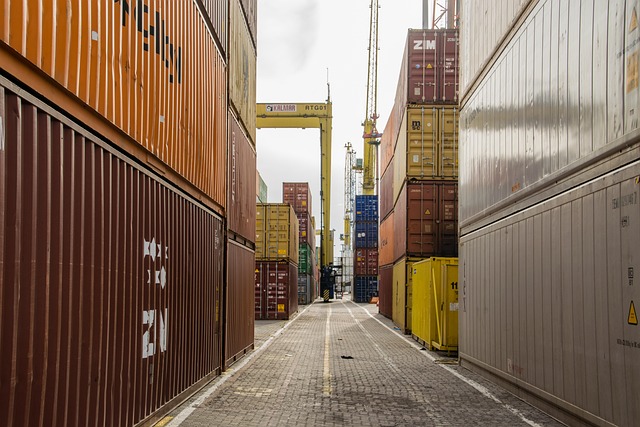“We supply and export Californium from Nigeria and Africa to international buyers in many countries around the world.”
Californium Supply & Export From Nigeria and Africa
We supply and export Californium from Nigeria & Africa
- Home
- Minerals & Metals
- Californium Supply & Export From Nigeria and Africa
Our Service To You
Whether you want to purchase Californium from Nigeria or Africa and have it shipped to any port around the world, our world-class team is built to help you close fast, safe, and profitable transactions on time, every time!
Our Californium Trade Specifications are listed below:
Origin: Nigeria
Mineral Type: Californium
Physical Specification: Based On Buyer's Specification
Quantity: Based On Buyer’s Specification
Price: Negotiable / Metric Tonne
Trade Process: Ex Works/FOB/CIF
Payment Method: 100% irrevocable SBLC or L/C at sight from a top 25 prime bank
Shipping Time: 15 days after confirmation of L/C
Loading Port: Lagos, Nigeria
Our Californium Trade Specifications are listed below:
Origin: Nigeria
Mineral Type: Californium
Physical Specification: Based On Buyer's Specification
Quantity: Based On Buyer’s Specification
Price: Negotiable / Metric Tonne
Trade Process: Ex Works/FOB/CIF
Payment Method: 100% irrevocable SBLC or L/C at sight from a top 25 prime bank
Shipping Time: 15 days after confirmation of L/C
Loading Port: Lagos, Nigeria
About The Services
Donec felis tellus, malesuada id velit eget, consectetur placerat lorem. Morbi et dolor pellentesque, tempus tortor sit amet, efficitur eros. Vestibulum id nunc maximus, dapibus elit quis, aliquet augue. Duis commodo egestas elit at vestibulum. Nullam enim velit, consectetur accumsan ultricies sed.
- About Californium Mineral
- Our Trade Process
What is Californium?
Californium is a synthetic chemical element with the symbol Cf and atomic number 98. It is a member of the actinide series, a group of elements that includes uranium and thorium. Californium is produced artificially in nuclear reactors, and it is named after the U.S. state of California.
Key Characteristics of Californium:
- Radioactivity: Californium is highly radioactive, and it does not have any stable isotopes. Its most stable isotope, Californium-251, has a half-life of about 898 years.
- Production: It is primarily produced in nuclear reactors by bombarding heavy atoms, such as curium, with neutrons.
Potential Uses of Californium:
- Neutron Source: One of the primary uses of californium is as a neutron source. Neutrons emitted from Californium-252 can be used for various purposes, including neutron radiography, neutron activation analysis, and in the oil and gas industry for well logging.
- Nuclear Research: Californium is used in nuclear physics research, particularly in studies involving nuclear reactions and the behavior of heavy nuclei.
- Medical Applications: While not widely used, californium has been explored for potential medical applications, including cancer treatment. It can be used as a neutron source for neutron capture therapy, a technique for treating certain types of cancer.
- Metal Detection: Californium-252 has been used in metal detectors at airports. The neutrons it emits can interact with metal objects, providing a way to detect hidden or shielded metallic items.
It's important to note that californium is not a practical element for everyday use due to its scarcity, expense, and radioactivity. Its applications are limited to specialized fields where its unique properties, particularly its neutron-emitting characteristics, are beneficial for specific purposes.
Californium is a synthetic chemical element with the symbol Cf and atomic number 98. It is a member of the actinide series, a group of elements that includes uranium and thorium. Californium is produced artificially in nuclear reactors, and it is named after the U.S. state of California.
Key Characteristics of Californium:
- Radioactivity: Californium is highly radioactive, and it does not have any stable isotopes. Its most stable isotope, Californium-251, has a half-life of about 898 years.
- Production: It is primarily produced in nuclear reactors by bombarding heavy atoms, such as curium, with neutrons.
Potential Uses of Californium:
- Neutron Source: One of the primary uses of californium is as a neutron source. Neutrons emitted from Californium-252 can be used for various purposes, including neutron radiography, neutron activation analysis, and in the oil and gas industry for well logging.
- Nuclear Research: Californium is used in nuclear physics research, particularly in studies involving nuclear reactions and the behavior of heavy nuclei.
- Medical Applications: While not widely used, californium has been explored for potential medical applications, including cancer treatment. It can be used as a neutron source for neutron capture therapy, a technique for treating certain types of cancer.
- Metal Detection: Californium-252 has been used in metal detectors at airports. The neutrons it emits can interact with metal objects, providing a way to detect hidden or shielded metallic items.
It's important to note that californium is not a practical element for everyday use due to its scarcity, expense, and radioactivity. Its applications are limited to specialized fields where its unique properties, particularly its neutron-emitting characteristics, are beneficial for specific purposes.
Our trade process spreads across C&F and FOB depending on the buyer's preference.
Here's what they entail:
1). Cost and Freight (C&F): Here, the seller will handle everything from loading the vessel and shipping the product to wherever the buyer wants it delivered.
2). Freight On Board (FOB): Here, the seller pays for the transportation of the goods to the port of shipment, plus loading costs, while the buyer pays the cost of marine freight transport, insurance, unloading, and transportation from the originating port to the final destination.
Here's what they entail:
1). Cost and Freight (C&F): Here, the seller will handle everything from loading the vessel and shipping the product to wherever the buyer wants it delivered.
2). Freight On Board (FOB): Here, the seller pays for the transportation of the goods to the port of shipment, plus loading costs, while the buyer pays the cost of marine freight transport, insurance, unloading, and transportation from the originating port to the final destination.
We Are Ready To Handle Your Request
Enter your details and we will be in touch to discuss your project
